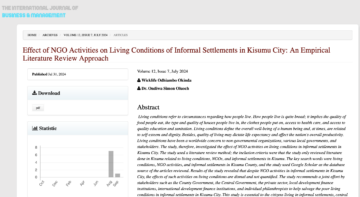Household overcrowding is a serious public health threat associated with high morbidity and mortality. Rapid population growth and urbanisation contribute to overcrowding and poor sanitation in low-income and middle- income countries, and are risk factors for the spread of infectious diseases, including COVID-19, and antimicrobial resistance. Many countries do not have adequate surveillance capacity to monitor household overcrowding. Geostatistical models are therefore useful tools for estimating household overcrowding. This study, aimed to estimate household overcrowding in Africa between 2000 and 2018 by combining available household survey data, population censuses, and other country-specific household surveys within a geostatistical framework.
Authors: Michael G Chipeta 1, Emmanuelle P A Kumaran 2, Annie J Browne 2, Bahar H Kashef Hamadani 3, Georgina Haines-Woodhouse 2, Benn Sartorius 4, Robert C Reiner Jr 5, Christiane Dolecek 3, Simon I Hay 5, Catrin E Moore
Full Text Link: https://pubmed.ncbi.nlm.nih.gov/35932787/
Related Publications





